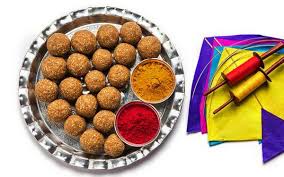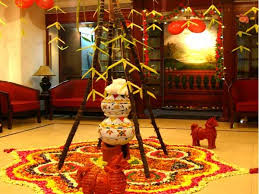Makar Sankranti – Significance Of The Festival
Makar Sankranti is celebrated as a significant festival in India. ‘Makar’ means ‘Capricorn’ and the movement of the sun into ‘Makara Raashi’ or the ‘Zodiac of Capricorn’ is called Makar Sankranti.
Significance Of Makar Sankranti

In the Vedas, Sankranti deciphers movement of the Sun from one rashi (constellation of the zodiac) to the next. Hence, there are 12 Sankrantis in a year. Out of these, the Makar Sankranti is considered the most auspicious and it is one of the few Hindu festivals that is aligned with the solar cycle. The festival of Sankranti marks the beginning of the harvest season when new crops are worshipped and shared with delight.
The harvest festival heralds a change in season, as from this day, the Sun begins its movement from Dakshinayana (South) to Uttarayana (North) hemisphere. The festival, therefore, is dedicated to God of Sun.
Traditional Connotation Of Makar Sankranti As Per Ayurveda
In the ancient scriptures, it is suggested that one should wake up just before sunrise and take a bath on the day of Sakranti, for a positive and auspicious start to the day. One should mix a small quantity of Til or Sesame Seeds in the bathing water. After bathing, it is suggested that one must offer prayers to the Sun by chanting the Gayatri Mantra and doing Argya (pouring water towards the Sun).
What Should Be Done On Makar Sankranti?

Sankranti is a time to consume freshly harvested food grains, which are first offered to the Gods and then eaten. Ayurveda suggests eating Khichdi since it is a light and an easily digestible food. The connotation of eating Khichdi is that it hints the body to prepare for the change in season. From the nourishing yet cold winter season to forthcoming warm, spring season.
The temperature around this time fluctuates from being cold to surprisingly lukewarm. Which makes you susceptible to the imbalances in your body. Khichdi is the perfect dish to satiate the appetite and provide the body with the much-needed nutrition.











